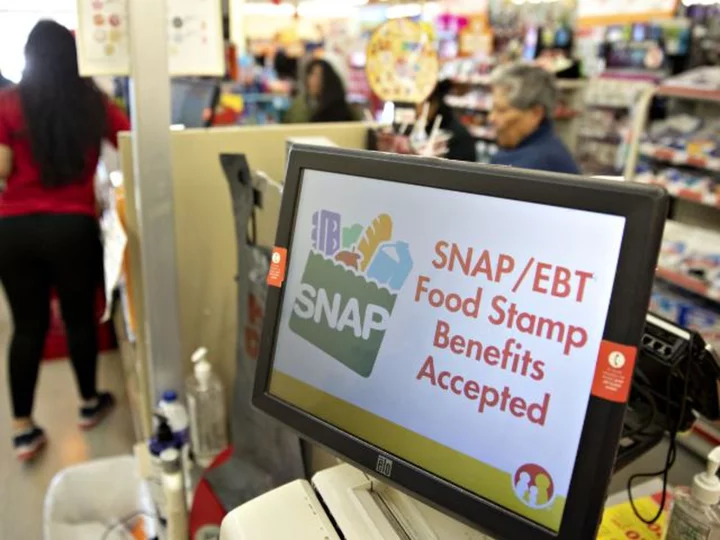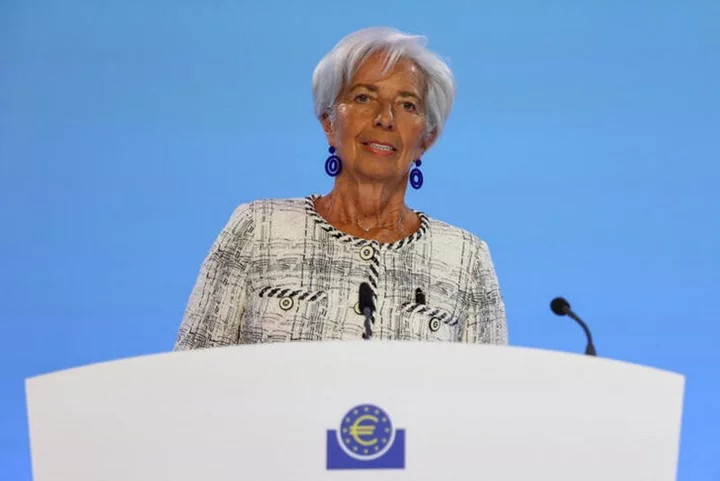Millions of people are set to lose Covid-19 pandemic-era benefits this fall.
The expiration of these programs, which were created by Congress in the early years of the pandemic, will strip away economic assistance that millions of Americans have received for years and still rely on.
Lawmakers passed several sweeping pandemic relief packages during 2020 and 2021, authorizing trillions of dollars in spending on a variety of programs aimed at helping households who may be struggling economically due to the Covid-19 pandemic. The laws also put in place some key economic benefit programs long pushed by progressives, albeit on a temporary basis.
Some aid, like direct stimulus payments, expanded unemployment benefits and enhanced child tax credits, have already expired. But there's still time for other funds, like the billions of dollars of aid for K-12 schools, to be spent.
Here are the benefits people will lose this fall
Student loan payment pause
Roughly 28 million people will be required to start paying their monthly student loan bills in October after a yearslong pandemic pause.
Typically, those payments were between $200 and $299 in 2019 before the pause went into effect, according to the Federal Reserve.
Federal student loan accounts have effectively been frozen since March 2020. But interest will resume accruing on September 1. Bills will begin going out to borrowers in September and October, at least 21 days before a borrower's first payment is due.
The pause on payments led to an increase in credit scores for federal student loan borrowers, as well as increases in their borrowing on credit cards, mortgages and auto loans, according to a paper by economists at the University of Chicago.
An increase in borrowing could mean that these student loan borrowers felt more comfortable making bigger purchases or buying a home or car while their student loans were frozen.
But now, the extra debt could put some borrowers at risk of struggling to afford their student loan payments when they resume.
More student loan borrowers are currently behind on other kinds of bills than they were before the Covid-19 pandemic, according to a recent study by the Consumer Financial Protection Bureau.
The report also said that about 1 in 5 student loan borrowers have at least two risk factors that suggest they could struggle when scheduled payments resume, like being delinquent on student loan payments before the pandemic or having multiple student loan servicers.
To ease the transition back into repayment, the Biden administration is providing a one-year on-ramp period for borrowers.
While payments will be required to be made during that time, and interest will accrue, borrowers will be shielded from some of the consequences of missing their payments. They won't be reported to credit bureaus, be considered in default or referred to collection agencies for late, missed or partial payments during the on-ramp period.
Child care provider stabilization funds
The American Rescue Plan Act, which Democrats in Congress passed in 2021, included $24 billion in child care stabilization grants. Providers could use the funds to improve workers' compensation, pay for rent, mortgages and utilities, and buy personal protective equipment and other supplies, among other needs.
Some 220,000 child care programs -- the majority of them family home providers -- received the funds, and 9.6 million children were affected, according to the Department of Health and Human Services. The average award was $23,300 for family home providers and $140,600 for child care centers as of the end of 2022.
But the funding expires on September 30. More than 70,000 programs could close and about 3.2 million kids could lose their spots, according to The Century Foundation.
Suspension of work requirements for food stamps
At the start of the pandemic, Congress suspended the requirement that certain adults work in order to get food stamps. But these recipients will start losing their benefits in October unless they fulfill the mandate, meet other exemption criteria or live in a "waived" area with high unemployment or limited jobs.
Able-bodied adults without dependents who are between ages 18 and 49 can only receive food stamps for three months out of every three years unless they work or participate in other activities at least 20 hours a week.
Under the debt ceiling package that Congress approved last month, those ages 50 to 52 will also be subject to the time limit this fall, though veterans, people experiencing homelessness and certain other adults of all ages will be newly exempt. (Those ages 53 and 54 will be subject to the work requirement starting in the fall of 2024, though the expansion beyond age 49 only lasts until the fall of 2030.)
The suspension was tied to the federal public health emergency, which ended in May. The clock on the time limit started in July.
At least 500,000 people are expected to lose access to food stamps when the requirement returns, according to the Center on Budget and Policy Priorities. Separately, around 750,000 folks ages 50 through 54 are at risk of being disenrolled because of the temporary increase in the age limit.
Continuous Medicaid coverage
Millions of Americans are expected to lose their Medicaid coverage this fall as states continue reviewing residents' eligibility and disenrolling those who no longer qualify.
States had been barred by Congress from winnowing their Medicaid rolls since the Covid-19 pandemic began. That prohibition ended on April 1, but states have 14 months to complete the unwinding process.
Roughly 3.2 million people have already had their coverage terminated, the majority of which are for procedural reasons, such as not completing renewal forms, according to KFF. It estimates a total of 17 million people could be disenrolled from the program.
Here are some of the programs that still have funding
Rental assistance
During the pandemic, Congress authorized more than $46 billion for an Emergency Rental Assistance, or ERA, program aimed at helping low-income tenants pay their rent and utility bills.
The money was disbursed from the US Treasury to more than 500 local ERA programs, which have made more than 10 million payments to renters facing eviction.
There was roughly $8 billion left earlier this year. But just about 13% of the programs remain open while the others have permanently closed or stopped accepting applications because money is running low, according to the National Low Income Housing Coalition.
The local ERA programs were allowed to set different qualifying criteria for applicants. But generally, tenants must meet an income requirement, show they lost income during the Covid-19 pandemic and demonstrate a risk of homelessness in order to qualify for the money.
K-12 schools
Congress authorized more than $190 billion during 2020 and 2021 to help America's schools reopen and stay open during the pandemic.
While a lot of the funds were used quickly to buy personal protective equipment, upgrade ventilation and boost summer school programs, billions of dollars remain. Schools have until September 30, 2024, to spend the money.
Initially, schools were slow to spend the money, but they are now on track to use all the funds available by the deadline, according to Edunomics Lab, a research center at Georgetown University.
Help paying for child care
As part of their effort to help lower-income parents pay for child care, Democratic lawmakers provided $15 billion to states to expand assistance and improve the quality of care as part of the American Rescue Plan Act.
States are using the funding in a variety of ways, including covering part or all of the cost of copayments, boosting the income limit to qualify for assistance and increasing payment rates to providers.
The funding must be used by September 2024.
Relief funds for state and local governments
The American Rescue Plan Act provided $350 billion for state, local, territorial and tribal governments to help them contend with and recover from the Covid-19 pandemic.
Recipients can use the funds to replace revenue lost because of the pandemic, support public health initiatives, assist residents, small businesses, nonprofit groups and others who were hit economically, provide premium pay for essential workers and invest in water, sewer and broadband infrastructure.
Governments must spend the money by the end of 2026.
Here are some the main relief measures that are long gone
Stimulus checks
The federal government sent out three rounds of stimulus payments, also known as economic impact payments, directly to low- and middle-income taxpayers during 2020 and 2021.
Each round was worth a different amount. The largest was sent in 2021 and was worth a maximum of $1,400 per taxpayer and another $1,400 per dependent.
In total, more than 476 million payments totaling $814 billion in financial relief went to households, according to the Pandemic Response Accountability Committee.
Expanded unemployment benefits
Congress enacted a historic expansion of unemployment benefits to help Americans deal with the economic upheaval sparked by the Covid-19 pandemic in March 2020.
A key component of the relief effort was a federal weekly supplement for out-of-work Americans. The jobless received a $600-a-week boost from April through July of 2020. Congress then revived the enhancement in late December 2020 but reduced it to $300 a week. That supplement expired in September 2021, though many states led by Republicans and one with a Democratic governor ended it earlier.
Lawmakers also created two other major measures to aid the jobless. The Pandemic Unemployment Assistance program provided payments for freelancers, the self-employed, independent contractors and certain people affected by the outbreak, while the Pandemic Emergency Unemployment Compensation program extended payments for those who exhausted their regular state benefits. Those programs also ended by September 2021.
A total of about $878 billion in pandemic unemployment benefits were paid from April 2020 through September 2022, according to the Government Accountability Office, citing Department of Labor data.
Enhanced child tax credit
Democratic lawmakers greatly expanded the child tax credit for 2021 as part of the American Rescue Plan Act.
The three-part enhancement increased the maximum credit to $3,600 for children under age 6 and $3,000 for those ages 6 through 17. Heads of households earning up to $112,500 a year and married couples making up to $150,000 were eligible for the full amount.
Also, it made the credit fully refundable so the lowest-income families could qualify. And it sent half the credit to families in monthly installments of up to $300 from July through December 2021 to help them cover expenses. Parents claimed the other half when they filed their 2021 tax returns.
More than 36 million families with more than 61 million kids received monthly payments, which totaled more than $93 billion, according to the Internal Revenue Service.
Prior to the expansion, eligible parents received a credit of up to $2,000 for children up to age 17 when they filed their taxes. The credit returned to that amount for 2022 and beyond.
The beefed-up credit lifted 2.1 million kids above the poverty line and reduced the child poverty rate by 2.9 percentage points to 5.2% in 2021, according to the US Census Bureau's Supplemental Poverty Measure.
Small business loans
The Paycheck Protection Program, known as PPP, was a key part of the federal government's immediate response to the pandemic.
The program was designed to get money out as quickly as possible to small business owners who were struggling to pay their employees. Small business owners who used the money for a qualifying reason, like payroll, would see their loan forgiven.
The program provided 11.5 million loans totaling nearly $790 billion.









